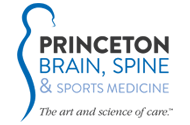Chiari Malformation
Chiari Malformation
Overview, Symptoms & Treatment
Chiari malformation is a condition in which brain tissue protrudes into the spinal canal. Obstructing the normal cerebrospinal fluid (CSF) pathway, this tissue can lead to a buildup of fluid on the brain (hydrocephalus) or in the spine (syringomyelia).
Types of Chiari Malformation
Chiari malformation is categorized by four types, based on anatomy of brain tissue and occurrence of developmental brain/spine abnormalities.
- Chiari malformation type I (most common). This condition develops while the brain and skull are still growing, and patients with type 1 typically don’t have symptoms until late childhood or adulthood. Patients with other types of Chiari malformation are often diagnosed in utero, during birth or during early infancy.
- Chiari malformation type II. Involves both the brainstem and cerebellum below the foramen magnum. This condition is usually associated with spina bifida and myelomeningocele, which is a sac-like opening in the back where the spinal cord is exposed to the air. This is found in children and is also sometimes known as Arnold Chiari malformation.
- Chiari malformation type III. Type III is the most serious and is relatively uncommon. The cerebellum and the brainstem produce a pouch-like structure containing brain matter that protrudes from the back of the head and neck. Chiari III causes severe neurological deficits.
- Chiari malformation type IV. Also very uncommon, this type of Chiari malformation involves an incomplete or underdeveloped cerebellum.
In addition to these four types of Chiari malformation, there is another potential form—called “borderline” or “type 0”—that has been recently suggested. Proponents of the theory believe that a Chiari type 0 patient would have no protrusion of the cerebellum below the foramen magnum (hole in the base of the skull where the spinal cord passes through) but would exhibit signs and symptoms of Chiari malformation with a syrinx (fluid cavity in the spinal cord). This type of Chiari is under study and is still quite controversial.
Treatment & Management of Chiari Malformation
There is no cure for Chiari malformation, but treatment helps to relieve symptoms and restore quality of life. Chiari type I treatment is based on a number of factors, including symptom severity and whether or not a syrinx exists. When a patient has no symptoms or neurological findings, your neurosurgeon will often manage the condition using watchful surveillance. When symptoms are mild but manageable, pain-relieving medications may be prescribed.
Surgery may become necessary if a patient notices symptom progression, reports neurological deficits or experiences an enlarging syrinx. When surgery is required, it typically begins with an incision that starts in the middle of the back of the skull and extends midway down the back of the neck. Muscles are gently separated from the base of the skull, as well as the back of the first cervical vertebra.
Once the muscles are separated, a craniectomy is performed to enlarge the opening of the base of the skull and allow additional CSF flow space next to the brain. To do this, a specialized surgical instrument is used to carefully shave a small piece of bone about the size of a silver dollar. The first cervical vertebra is then carefully removed during a laminectomy procedure. In some cases, removal of additional cervical lower lamina may be necessary.
Request a First or Second Opinion for Chiari Malformation
PBSSM’s Dr. Mark McLaughlin, board-certified neurosurgeon specializing in treatment for Chiari malformation and neuralgia, provides primary treatment for all types of CM. To request an appointment, verify insurance or speak with a member of our medical team, call 609.921.9001 in NJ or 215.741.3141 in PA. Providing skilled, compassionate care in seven area facilities, PBSSM neurosurgeons also hold privileges at many reputable area hospitals.
Additional Resources
To learn more about Chiari malformation, view these educational videos provided by Dr. McLaughlin:
Request an Appointment
Submit an appointment request on our patient portal or contact our New Jersey and Pennsylvania campuses to speak with a patient advocate.
